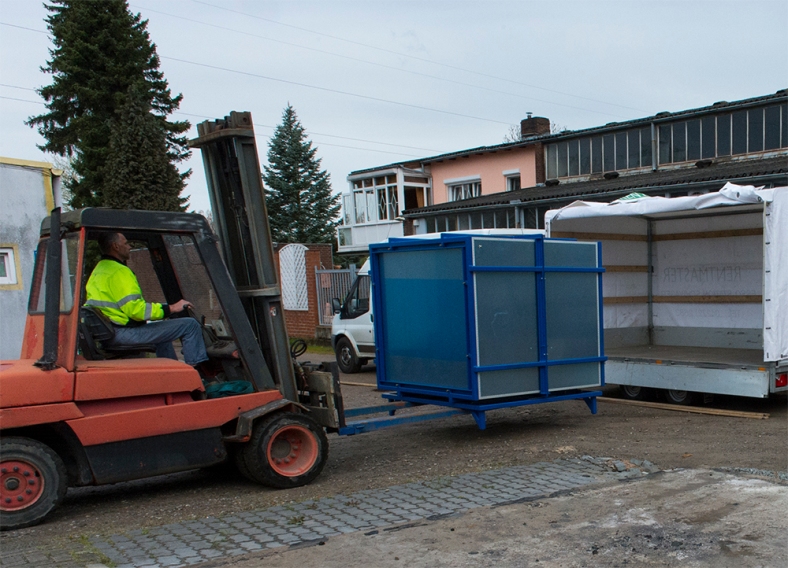I wasn’t really happy with the bass subwoofer staying in front of a sensitive turntable with all its parts, tonearms, carts etc. Nevertheless we have it here with an air based system, thus the platter is nearly rolling completely encoupled from everything I started to bring in a protection shield, also fully disconnected from the turntable.

For testing I used the records of the Emil Brandquist Trio, the “New Swedish E.S.T.”, and Brian Blade and The Fellowship’s latest LP – all records coming in finest recording and pressing quality!

The result is stunning. Sound and instruments are a little more quiet and engaging. You may say that you can’t do a lot about Bass reflexions but this experiment shows it is just the opposite.

Additional EMV images:




If your subwoofer produces low notes, those will easily bend around this shield. The size of it has to be at least a wavelength (10 metres for 34 Hz) to have any effect except a psychological one. Don’t get me wrong. Peace of mind is what a good hifi should bring you and anything augmenting that peace is money well spent
LikeLike
Unfortunately Ralf is so right.But don’t worry there is a solution as money is no object.You have to isolate the turntable from the environment.This can be done by ordering a special heavy, made from iron, table like the ones used for laser experiments.The legs of the table will go through the wooden floor and straight to concrete.Then the table and the turntable will be enclosed in a ”cupboard” made of 5~10mm thick lead sheets. Last but not least a camera must be installed in the cupboard so you won’t loose the aesthetics of the turntable.
Cheers.
LikeLike
I do control my bass waves by a DSP controlled active subwoofer. This helps quite a lot. Nevertheless if you will not go for a speciall Double Bass Array (DBA) by using special subs behind your hearing place you also have to play around with passive measurements like with the resonators I am using in the corners, at the ceiling or at the rear wall. As your statement technically is correct the funny thing is that the resonator in front of the turntable makes a difference as well.
E.
LikeLike
I attached some images showing an EMV-measuring cage. You also see a turntable, it shows pneumatic decoupling feet as my table carries those too, preventing reverberend sound. All cable inputs are HF-secured designs. In doing so you may reach the optimum decoupling. The question remains if you like such an installation inside of your listening room.
E.
LikeLike
With respect to high frequency electromagnetic interference, a chamber with RF-sealed doors i certainly the right path. I have listened to the setup with the turntable pictured and the sound is extremely revealing. The topic here was reducing airborne (sound) interference, The size of a “wall” that would be necessary to make the incoming soundwaves directional (not bend around it) is huge. A chamber can be considered small compared to that. And it presents an infinitely large “wall” once the door is closed. Whether it is made from lead or an alu sandwich with special surface like for EMC chambers doesn’t really matter as long as it is close to airtight. If not the sound will still come in. The typical EMC chamber is not designed to be airtight, so needs modification. The proposed lead panel arrangement also needs a sealed door to be really 100%. I like the idea with the camera. Putting the turntable in another room separated by a “studio”-style soundproof window might be another road to LP nirvana
LikeLike
The magnetic decoupling is not of any importance unless you are next to power or a radio station. As for the LF and in general sound decoupling an easy solution would be a large safe that could easy accommodate the turntable and the camera.Also note that lead sheets is the best material for isolating low frequencies.
Cheers
LikeLike